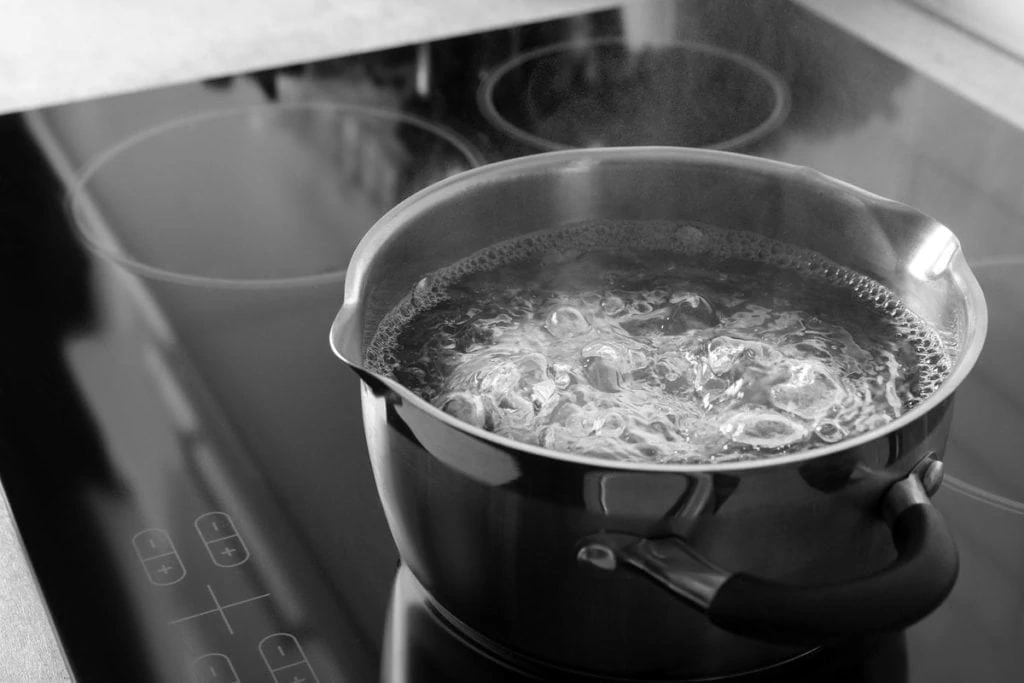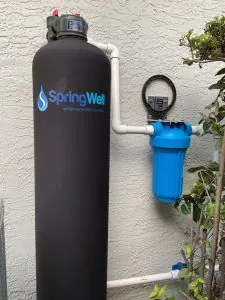
Do you ever think about the way you’d cope in a ingesting water emergency? Most of us don’t—till a disaster hits, and we’re left scrambling to search out clear ingesting water. It’s time to alter that.
We are able to’t survive with out clear ingesting water for lengthy, so having sufficient is significant when your water provide is interrupted or compromised, like throughout a large earthquake, flood, or zombie apocalypse.
On this quick information, we’ll share some easy and sensible ideas that will help you put together for ingesting water emergencies. We’ll cowl every part from treating your water to storing it correctly and guaranteeing it stays recent and protected to drink.
What’s a Consuming Water Emergency, and What Can Trigger It?
A ingesting water emergency happens when the same old water provide in an space is interrupted or turns into unsafe for ingesting, maybe as a consequence of any of the next:
- Disasters (hurricanes, floods, earthquakes)
- Water provide system disruption or lack of strain as a consequence of pipe bursts, water predominant breaks, repairs, or malfunctions on the water remedy plant.
- Contamination occasions (chemical spills, bacterial outbreaks)
Disasters, specifically, may cause energy outages. So, in case you’re a non-public effectively person, your effectively pump doubtless received’t work with out energy; subsequently, you received’t have operating water in your house. Public water clients may expertise disruptions of their water provides, like what occurred within the Texas water crisis in 2021.
As you most likely noticed or heard on the information, a brutal winter storm swept throughout areas of the Lone Star state, knocking water remedy vegetation offline and leaving nearly half the inhabitants with out entry to wash operating water. The faucets ran dry in lots of houses, discovering bottled water was practically unimaginable, and a few folks needed to boil snow.
Advisories Generally Issued in a Consuming Water Emergency
Throughout ingesting water emergencies, public well being officers could problem essential notifications in regards to the security and high quality of the ingesting water in your group. These advisories can fluctuate in which means and severity, so listed below are the three commonest varieties:
1. Boil Water Advisory (BWA)
A boil water advisory is issued when there’s an opportunity your water provide comprises micro organism, viruses, parasites, or different doubtlessly dangerous microbes. As such, well being authorities will instruct you to deliver the water to a rolling boil for at the least one minute (or 3 minutes at elevations above 6,500 toes) earlier than ingesting it, utilizing it for cooking, making ice, or brushing your enamel till the advisory is lifted.
Be taught extra: What is a Boil Water Advisory? – And What to Do If One is Issued in Your Area
2. Do Not Drink Advisory
This one is extra severe than a BWA. As its title implies, a Do Not Drink advisory advises residents to not drink or use the water for cooking, baking, making ready drinks, brushing their enamel, and many others. That’s as a result of there could also be dangerous stuff in your water that boiling can’t take away or repair. You’ll want to search out one other supply of ingesting water.
3. Do Not Use Advisory
A Do Not Use advisory warns to not use your faucet water for any goal. The water could also be tainted with dangerous components which can be unsafe to drink and dangerous if uncovered to the pores and skin or inhaled.
Learn how to Deal with Faucet Water for Use in An Emergency
Entry to wash ingesting water in an emergency isn’t nearly quenching your thirst; it’s additionally about guaranteeing your water is freed from dangerous contaminants that would jeopardize your well being and security. So, the primary order of enterprise needs to be to search out out precisely what’s in your ingesting water.
Discover Out What’s in Your Water
Earlier than treating your water, you’ll need to know what contamination points you’re coping with, if any, and the simplest methods to handle them. Right here’s how one can obtain this:
1. Receive a water high quality report.
In case your water comes from a municipality, your water supplier or native well being division needs to be testing it routinely to make sure contaminant ranges fall inside protected ranges. So, please request a duplicate of their newest water high quality report or seek for it on-line.
Your water high quality report ought to embody important info, corresponding to any potential points or contaminants in your water provide and particulars about particular pollution discovered within the water, particularly those who have exceeded regulatory limits or have well being implications.
Be taught extra: How to Read Your Water Quality Report: Helpful Tips and Expert Advice
2. Get your water examined.
If a non-public effectively provides water to your property, you received’t get a water high quality report, because the EPA doesn’t regulate non-public wells. Meaning you’ll should get your water examined independently. Some counties provide free testing, but when yours don’t, think about buying a water test kit from a state-certified laboratory in your space that does water testing. Costs will fluctuate relying on the laboratory and the check(s), however most individuals think about the price affordable for the thoroughness and accuracy of the exams.
Be taught extra: 10 Common Problems a Water Test Can Detect in Tap Water
Treating Your Water
You probably have examined your faucet water or have causes to imagine it’s unsafe, you must deal with the water earlier than utilizing it for ingesting, making ready meals, brushing your enamel, or for another goal that includes ingesting some or all the water. Hold scrolling as we briefly clarify widespread methods to deal with your ingesting water.

1. Boil the water.
Boiling the water is an old-school trick that helps purify water. The scorching temperature destroys disease-causing germs, together with micro organism, viruses, and parasites. Please observe, nonetheless, that boiling received’t take away chemical substances, metals, oils, toxins, sewage, or different contaminants. Additionally, if the water is cloudy earlier than boiling it, you must first filter it via a clear fabric, paper towel, or espresso filter or enable it to settle, then draw off the clear water and comply with the steps under:
- Carry the water to a rolling boil in a pot or electrical kettle for one full minute.
- Cowl the boiled water because it cools, then retailer it as instructed under.
- Retailer the water in sanitized containers with tight covers.
Warning: Consuming boiled effectively water with excessive nitrate concentrations (>10 mg/L) may be harmful for younger youngsters and pregnant ladies. So, in case you suspect nitrate is current or a check confirms it, use another water supply for cooking, ingesting, and making ready toddler formulation for kids six months of age and youthful.
2. Purify the water with liquid family bleach.
Boiling the water received’t all the time be the most suitable choice, as it could possibly devour a whole lot of vitality that may add up over time, particularly you probably have a big household. If that’s your scenario, you may disinfect small portions of water by including a chemical disinfectant, corresponding to liquid family bleach. Like boiling, family bleach received’t take away chemical substances or toxins. Nonetheless, it can kill germs—besides extra resistant ones, such because the parasites Cryptosporidium and Giardia.
Ideally, the liquid bleach ought to comprise 5%-9% sodium hypochlorite, so test the label for the precise proportion. Additionally, keep away from bleach that has perfumes, dyes, and different components.
To disinfect the water with bleach:
- Pour the unpurified water right into a clear container.
- Add roughly 1/8 teaspoon of plain unscented liquid bleach per gallon (16 cups) of water. If the water is cloudy earlier than including the bleach, add about 1/4 teaspoon per gallon.
- Stir the combination effectively and let it sit for about half-hour to permit it to destroy any microorganisms within the water. You need to discover a slight chlorine odor within the disinfected water. If not, repeat the dosage and let it stand for an additional quarter-hour earlier than utilizing.
- Retailer the water in clear, sanitized containers.

3. Filter the water.
Microbes like micro organism or viruses are simply certainly one of many pollution that make ingesting water unsafe to drink and use. For that reason, you’ll want one thing that may remove a broad vary of contaminants out of your ingesting water. That is the place a water filter is available in.
Water filter methods usually use a mixture of applied sciences and filtration levels to take away undesirable components from water. For instance, some reverse osmosis water filters use sediment filtration, carbon filtration, and reverse osmosis to remove as much as 99% of particular contaminants in water, together with:
- Heavy Metals: Aluminum, Barium, Beryllium, Cadmium, Calcium, Chromium, Copper, Iron, Lead, Magnesium, Manganese, Mercury, Silver, Thallium, Zinc
- Ions: Arsenic, Chloride, Fluoride, Nitrate, Potassium, Radium, Selenium, Sodium, Sulfate
- Chemical substances: Chlorine and Chloramine, Chlorine Byproducts (Trihalomethanes (THMs), Haloacetic Acids (HAAs)), Pesticides and Herbicides (Atrazine, glyphosate, 2,4-D), Prescribed drugs and Private Care Merchandise (Antibiotics, Hormones, Caffeine)
- Radionuclides: Radium and Uranium
There are a lot of different residence water filters to select from—whole-house carbon filters, water distillers, and UV remedy methods, to call a couple of. They arrive in all sizes and shapes, with completely different value tags, capabilities, and many others., and concentrating on varied contaminants. So, you would possibly need to try this text about the best water filtration systems for your home. It’ll clarify how water filters work and enable you discover the one which most accurately fits your wants.
Storing Consuming Water for Use in an Emergency
Except you intend to refill on bottled water, you’ll want to soundly retailer the handled faucet water for it to be clear and protected when wanted.
How A lot Water Ought to You Retailer?
Whereas everybody can have completely different wants, the Centers for Disease Control and Prevention (CDC) recommends storing at the least one gallon of water for every particular person in your family each day—two quarts for ingesting and two for meals preparation and sanitation. The company additionally suggests storing sufficient for at the least two weeks and maybe even extra in case you or anybody in your family is in poor health, pregnant, have youngsters or pets, or dwell in a scorching local weather.
Selecting a Container
What you retailer the water in can have a lot to do with the ensuing water high quality. It’s greatest to make use of FDA-approved food-grade storage containers, as they received’t move poisonous substances like BPA into the water. You will discover these containers at surplus or tenting provide shops. And in case you’re uncertain if the container is food-grade, don’t hesitate to ask the producer.
In the event you’re not in a position to make use of a food-grade container, be certain the one you utilize:
- Has a snug-fitting lid.
- Is product of robust, unbreakable supplies (positively not glass).
- Has a slender opening, if attainable, so you may pour water out simply.
- Is stackable to preserve area.
Oh, and somewhat tip: Keep away from containers beforehand used to retailer poisonous substances corresponding to bleach, pesticides, or oil. And don’t overlook to scrub the containers totally earlier than filling them.
You probably have a bath and don’t plan to evacuate, buy a capped plastic bladder and fill it with faucet water. Often, this storage container is designed with the identical form as your bathtub, so it’ll match completely in most tubs, the place it’ll hold water recent for as much as 12 weeks. In any other case, you may fill the bathtub with water however solely use the water for flushing the bathroom and washing.
Washing and Sanitizing the Container
Your water is simply as clear because the container you retailer it in. So, ensure that these emergency lids and containers are squeaky clear. Wash them with scorching, soapy water, then rinse totally with extra scorching water.
Subsequent, comply with the steps under to sanitize the container:
- Pour a quart of water and a teaspoon of unscented bleach into the container.
- Cap the container tightly and shake effectively so the bleach answer touches each nook and cranny.
- Permit it to sit down for at the least 30 seconds, then empty it.
- Let the container air-dry or rinse it with the clear water you intend to retailer.
Storing the Container
Listed below are some ideas for storing the handled water from your property:
- Add one or two drops of liquid bleach per gallon to keep up water high quality whereas in storage.
- Securely cap all containers and label them with the preparation date.
- Hold containers in a cool, dry place away from direct daylight.
- Keep away from storing water provides, particularly in plastic containers, close to gasoline, kerosene, pesticides, or related substances, as their vapors can penetrate the plastic.
- Be certain that storage shelving is stable and steady as a result of water weighs greater than eight kilos per gallon.
- Take into account changing saved water provides each six months, particularly if the water hasn’t been commercially handled. Use the previous water for non-drinking functions, corresponding to flushing bathrooms, washing your automobile, watering vegetation, and many others.
- If area is restricted, retailer the water containers beneath your mattress or put a plank and fabric on a couple of of them and create an ottoman.
Utilizing the Water
In a ingesting water emergency, the very last thing you need is to threat contaminating the water you’ve handled and punctiliously saved. So, when taking the water from the containers, you should be further cautious. In the event you’re utilizing a scoop or different gadget, use a clear one every time you dip it within the water to keep away from contaminating it. Additionally, keep away from touching the water or the within of the container along with your arms, and by no means scoop out water along with your naked arms.
Can I Use Bottled Water in a Consuming Water Emergency?
Many well-liked bottled water manufacturers have been discovered to comprise a few of the identical contaminants as faucet water, including the infamous PFAS chemicals. Nonetheless, water contamination from these pollution in bottled water would doubtless be so low that it will take publicity over time to see any hostile results.
So, if bottled water is your solely choice, use it till the emergency is over. As quickly as attainable, think about returning to ingesting filtered water or putting in a water filter system in your house to make sure a extra dependable, environmentally pleasant, and cost-effective supply of unpolluted ingesting water.
Be taught extra: 7 Reasons to Choose Filtered Tap Water Over Bottled Water | Is It Safe to Drink Bottled Water Left in a Hot Car?
Closing Ideas
Clear ingesting water is one thing we take with no consideration till our provides are interrupted or contaminated. Since we are able to’t go with out it for lengthy, it solely is sensible to retailer sufficient of it and guarantee it stays clear and recent till it’s prepared to be used. Whether or not it’s a pure catastrophe, contamination concern, or provide disruption as a consequence of repairs, the rules above will assist make sure you and your loved ones have clear, protected ingesting water.
Trending Merchandise











